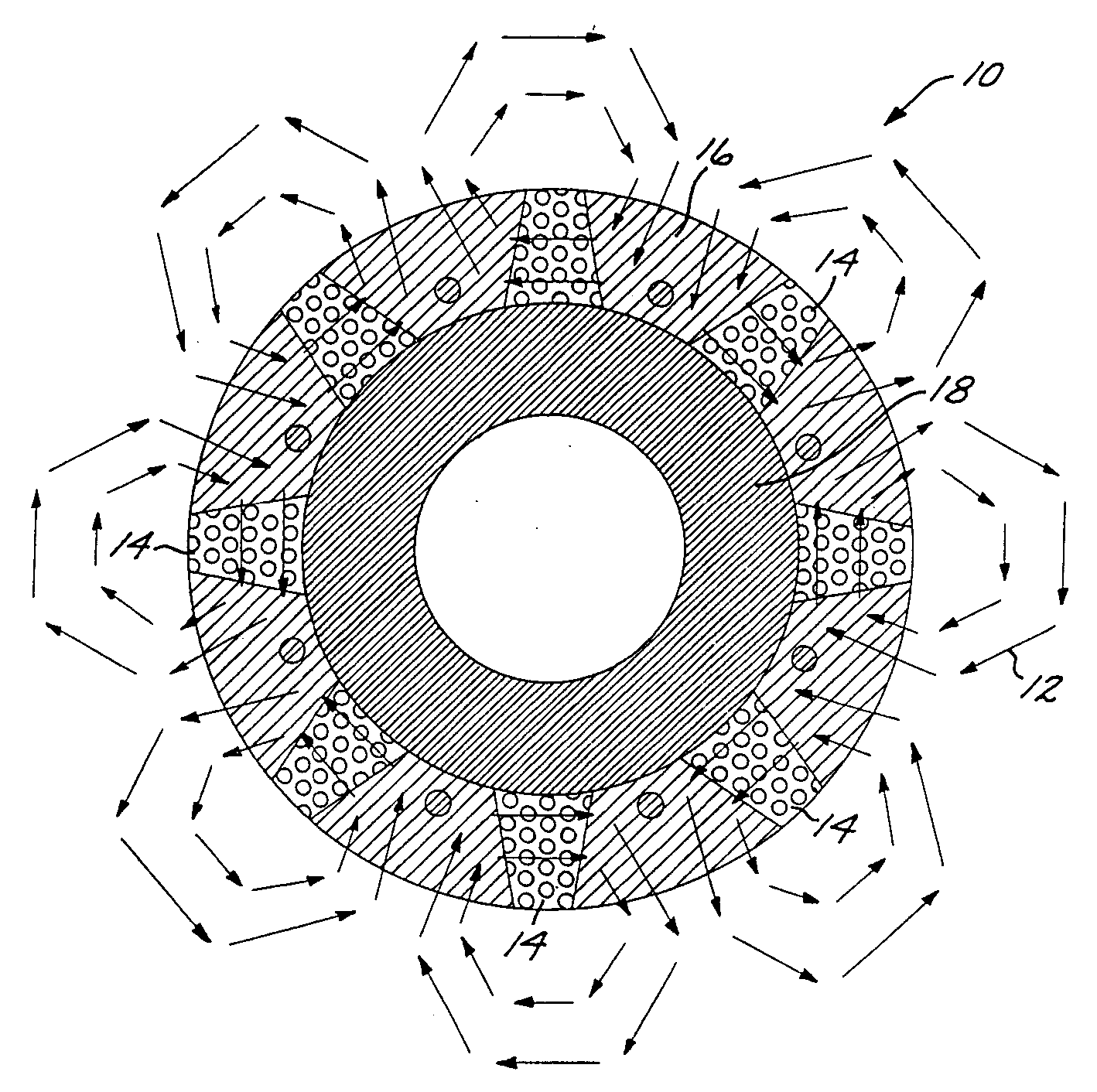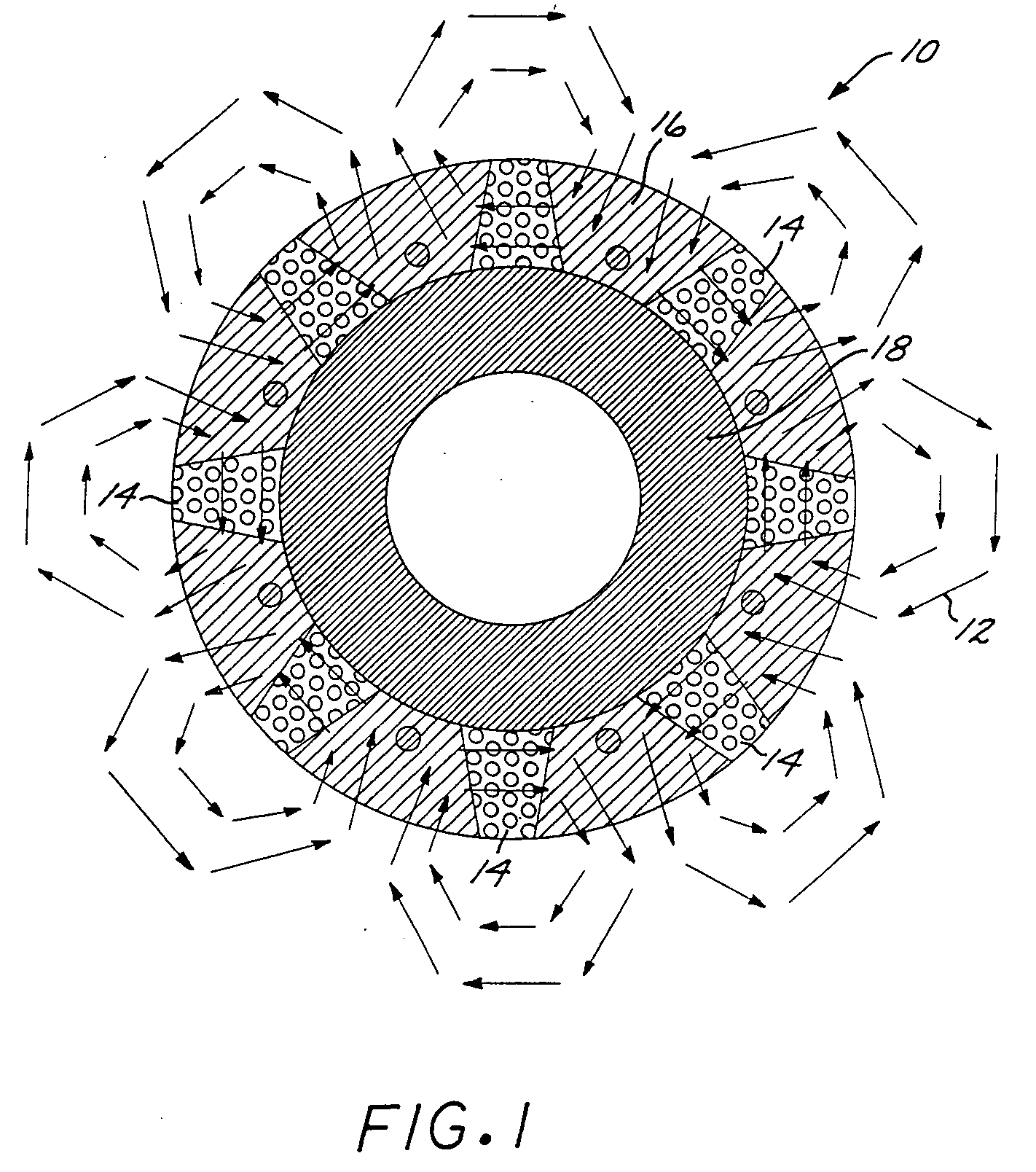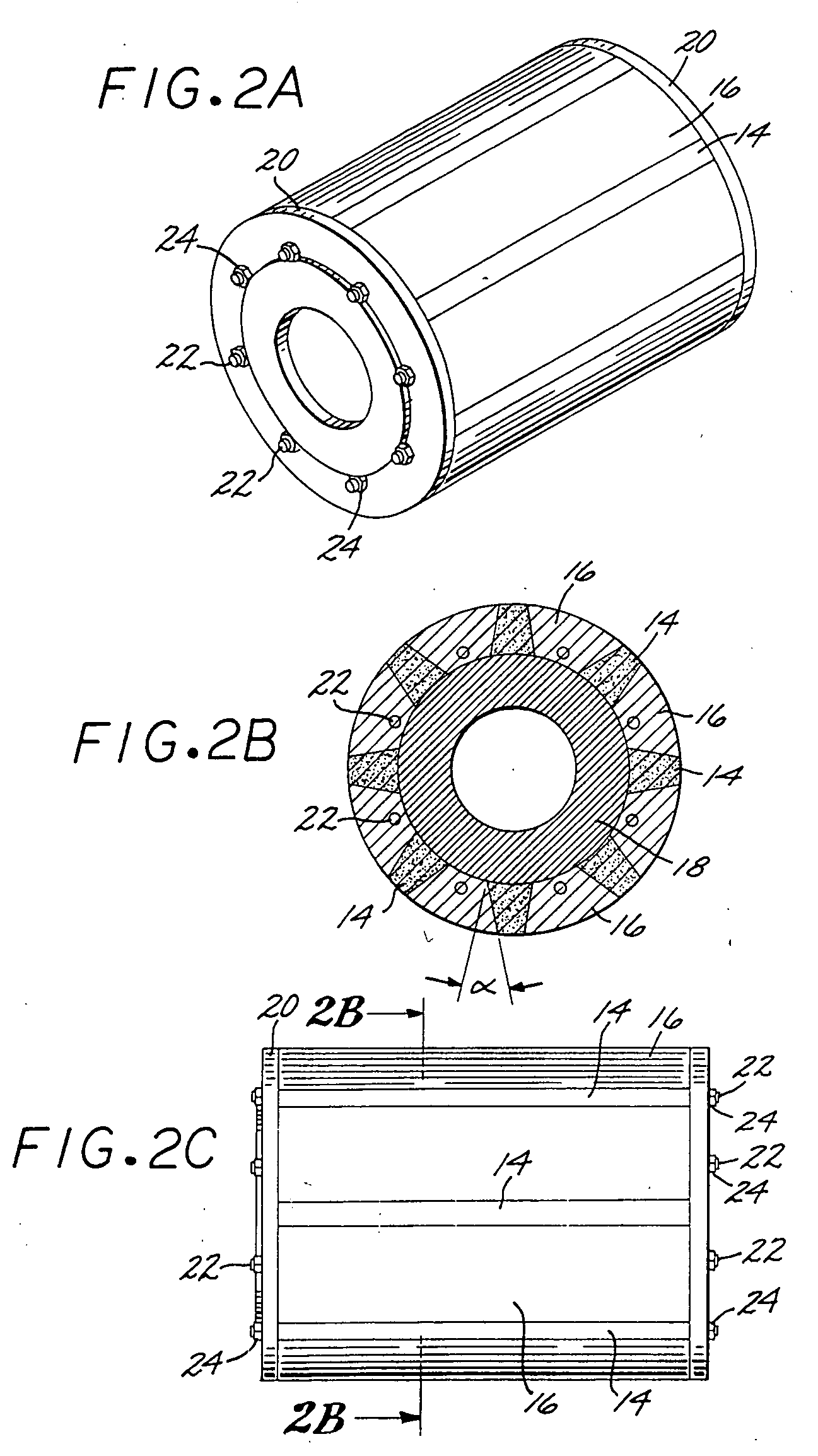Sleeveless permanent magnet rotor construction
a permanent magnet rotor and construction technology, applied in the direction of dynamo-electric machines, magnetic circuit rotating parts, magnetic circuit shape/form/construction, etc., can solve the problems of high risk, high cost, and time-consuming process of sleeving
- Summary
- Abstract
- Description
- Claims
- Application Information
AI Technical Summary
Benefits of technology
Problems solved by technology
Method used
Image
Examples
second embodiment
[0019]FIGS. 3A-3C illustrate the rotor construction of the present invention wherein one of the non-magnetic end caps 20 (right end cap 20′ as viewed from the paper) has been fabricated such that it is an integral part of magnetic rotor poles 16 (FIG. 3B is a sectional view along line A-A of FIG. 3C). In this case, the magnetic rotor poles 16 extend from the end cap 20′ in the form of fingerlike projections or prongs in the shape illustrated. This allows for solid rotor poles; in addition, this embodiment provides for an easier assembly process since the end cap 20 is simply bolted to the rotor poles by fasteners 26 rather than utilizing separate clamping rods and nuts. The magnets 14 are positioned adjacent the rotor poles 16 and joined to hub 18 as set forth hereinabove. In an alternate version of the embodiment shown in FIGS. 3A-3C, the end cap 20 is welded directly to the poles 16.
third embodiment
[0020] the sleeveless rotor design is shown in FIGS. 4A-4D. This configuration requires no bolts or other fasteners because a radial shrink fit between the non-magnetic end caps 20 and the ends of the magnetic rotor poles 16 hold the assembly together (FIG. 4B is a sectional view along line A-A of FIG. 4C). Two lips 21 (FIG. 4D) the depth of the end caps 20 are machined onto both ends of the rotor poles 16. This provides a surface for the inner diameter of end cap 20 to grab onto and mechanically retain the rotor poles 16, and hence the magnets 14 due to the taper angle between the magnets 14 and rotor poles 16. In this embodiment, the end caps 20 alternatively can, be made of composite fiber material which is wound directly onto the rotor poles, the shrink fit process not being required.
fourth embodiment
[0021] In the fourth embodiment shown in FIGS. 5A-5C, the magnetic rotor poles 16, and hence the magnets 14, are held to the hub 18 radially using countersunk bolts 30 rather than clamping rods or a lip on the rotor pole (FIG. 5B is a sectional view along line A-A of FIG. 5C). The size and number of bolts 30 used axially for each pole piece is determined by the rotating speed and size of the rotor. In this configuration, the end caps 20 are used only to protect the ends of the magnets 14 and not to retain the rotor poles 16 or magnets 14 and are secured to the assembly using fasteners 26.
[0022] The present invention thus provides a simple and economical technique for fabricating a sleeveless permanent magnet rotor construction for use in motor or generator configurations.
PUM
 Login to View More
Login to View More Abstract
Description
Claims
Application Information
 Login to View More
Login to View More - R&D
- Intellectual Property
- Life Sciences
- Materials
- Tech Scout
- Unparalleled Data Quality
- Higher Quality Content
- 60% Fewer Hallucinations
Browse by: Latest US Patents, China's latest patents, Technical Efficacy Thesaurus, Application Domain, Technology Topic, Popular Technical Reports.
© 2025 PatSnap. All rights reserved.Legal|Privacy policy|Modern Slavery Act Transparency Statement|Sitemap|About US| Contact US: help@patsnap.com



